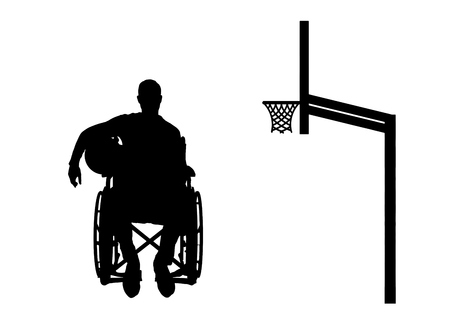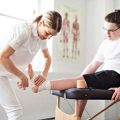1. Understanding Cerebral Palsy: Etiology and Diagnosis in the U.S.
Cerebral palsy (CP) is a group of neurological disorders that affect movement, muscle tone, and posture. It is one of the most common motor disabilities in childhood across the United States. While CP is a lifelong condition, early diagnosis and intervention can make a significant difference in a child’s quality of life. This section provides an overview of what causes cerebral palsy, the main risk factors, and how it is diagnosed within American healthcare settings.
What Causes Cerebral Palsy?
Cerebral palsy is usually caused by abnormal brain development or damage to the developing brain, most often before birth. Sometimes, this damage can happen during birth or in the first few years of life while the brain is still developing. Here are some common causes:
- Prenatal factors: Infections during pregnancy, genetic mutations, or exposure to toxins
- Perinatal factors: Complications during labor and delivery such as lack of oxygen (asphyxia)
- Postnatal factors: Severe jaundice, head injuries, or infections like meningitis in infancy
Main Risk Factors for Cerebral Palsy
Certain situations increase the likelihood that a child might develop CP. Understanding these risk factors helps American healthcare providers identify children who may need closer monitoring or earlier screening.
| Risk Factor | Description |
|---|---|
| Premature Birth | Babies born before 37 weeks have a higher risk due to underdeveloped organs and brain |
| Low Birth Weight | Infants weighing less than 5.5 pounds at birth are at increased risk |
| Multiple Births | Twins, triplets, or more have a higher chance due to shared resources in utero and prematurity |
| Maternal Health Issues | Infections, thyroid problems, or seizures during pregnancy can impact brain development |
| Birth Complications | Lack of oxygen or trauma during delivery increases risk for CP |
| Severe Infant Illnesses | Meningitis, encephalitis, or head injury shortly after birth can contribute to CP development |
How Is Cerebral Palsy Diagnosed in the U.S.?
The diagnosis of cerebral palsy in American healthcare typically involves several steps. Early identification is crucial for providing timely intervention services such as physical therapy and occupational therapy.
- Pediatric Assessment: Pediatricians monitor infants’ developmental milestones and motor skills during regular check-ups.
- Medical History: Providers review prenatal, birth, and early postnatal history for any complications or risk factors.
- Physical Examination: Doctors look for signs like abnormal muscle tone (either too stiff or too floppy), delayed movement milestones, poor coordination, or involuntary movements.
- Neuroimaging: Brain imaging (MRI or CT scans) may be used to identify areas of brain damage that correspond with symptoms.
- Additional Testing: Hearing and vision assessments help rule out other conditions and identify coexisting challenges.
The Role of Early Intervention Programs
In the U.S., many states offer Early Intervention (EI) programs that provide support services for children with developmental delays—including those with suspected or diagnosed cerebral palsy. Healthcare providers play a key role in referring families to these resources as soon as concerns arise.
2. Interdisciplinary Care Teams and Coordination
The Importance of Team-Based Care in the United States
Managing pediatric cerebral palsy (CP) in the U.S. involves more than just medical treatment—it requires a coordinated approach from a team of professionals who work closely with the child and their family. This interdisciplinary method helps ensure that all aspects of a child’s health, development, and daily life are considered. Team-based care is especially important in the American healthcare system, where families may interact with multiple specialists across various settings, such as hospitals, clinics, schools, and home environments.
Key Members of the CP Care Team
Each member of the care team plays a unique role in supporting children with CP. The table below outlines the main professionals involved and their contributions:
| Team Member | Main Role in CP Management | Typical Setting |
|---|---|---|
| Pediatrician | Primary medical provider; monitors growth, development, and coordinates referrals. | Clinic/Primary Care Office |
| Physical Therapist (PT) | Improves movement, strength, balance, and mobility. | Clinic, Home, School |
| Occupational Therapist (OT) | Helps with daily activities (dressing, feeding) and fine motor skills. | Clinic, Home, School |
| Speech-Language Pathologist (SLP) | Addresses speech, communication, and swallowing difficulties. | Clinic, School |
| Rehabilitation Specialist (Physiatrist) | Leads rehabilitation planning; focuses on maximizing function and comfort. | Hospital/Clinic |
| Educators/Special Education Teachers | Supports learning needs and develops Individualized Education Programs (IEPs). | School |
| Social Worker/Care Coordinator | Connects families to resources; assists with navigating insurance and support systems. | Clinic/Hospital/Community Agencies |
| Family/Caregivers | Central participants in daily care; advocate for child’s needs and preferences. | Home/All Settings |
How Collaboration Happens in Practice
In the U.S., effective coordination means regular communication between all team members. For example, after an initial evaluation by a pediatrician or physiatrist, therapists may perform detailed assessments and share updates during team meetings or through electronic health records. Educators provide feedback about classroom challenges, while families share observations from home. Many American care teams use shared care plans and family-centered meetings—sometimes called “care conferences”—to set goals together and adjust interventions based on progress.
Family-Centered Approaches in American CP Management
The involvement of families is at the heart of pediatric CP management in the U.S. Families are encouraged to participate actively in decision-making and goal-setting processes. Healthcare providers often ask about family priorities and cultural values to tailor therapies accordingly. Schools play a significant role by developing IEPs that outline specific educational supports for each child with CP. Social workers or case managers help families access community resources such as Medicaid waivers or assistive technology programs commonly available throughout the country.
This collaborative model ensures that children receive comprehensive support not only for their medical needs but also for their personal growth and participation in everyday life within their communities.

3. Evidence-Based Rehabilitation Interventions
Physical Therapy: Promoting Mobility and Strength
Physical therapy (PT) is a cornerstone of pediatric cerebral palsy (CP) management in the United States. Therapists use evidence-based techniques to help children improve mobility, balance, and muscle strength. Common PT interventions include:
- Stretching and Strengthening Exercises: To maintain or increase range of motion and prevent contractures.
- Gait Training: Using treadmills, parallel bars, or specialized walking devices to support ambulation.
- Functional Mobility Training: Practicing everyday movements like sitting, standing, and transferring between surfaces.
Adaptive Equipment in PT
American clinics commonly integrate adaptive equipment into PT sessions. These tools help children participate safely and effectively in therapy activities. Examples include:
| Equipment | Purpose |
|---|---|
| Ankle-Foot Orthoses (AFOs) | Support ankle stability and improve walking |
| Walkers & Gait Trainers | Assist with upright mobility |
| Standing Frames | Promote weight-bearing and bone health |
Occupational Therapy: Enhancing Daily Living Skills
Occupational therapy (OT) focuses on helping children with CP develop skills for daily life, including self-care, play, and school participation. Best practices in American OT settings often involve:
- Sensory Integration Therapy: Addressing difficulties with sensory processing to improve attention and comfort.
- Fine Motor Skill Development: Activities that build hand strength and coordination for tasks like writing, feeding, and dressing.
- Environmental Modifications: Adapting home or classroom setups for better accessibility.
Assistive Technology in OT
Many children benefit from assistive devices tailored to their needs. Some frequently used examples are listed below:
| Device | Description |
|---|---|
| Adaptive Utensils | Easier grip for eating independently |
| Pencil Grips/Writing Aids | Aid handwriting control and endurance |
| Dressing Aids | Zipper pulls, button hooks for self-dressing |
Speech-Language Therapy: Supporting Communication and Swallowing
Speech-language pathologists (SLPs) in the U.S. provide targeted interventions for children with CP who experience communication or swallowing challenges. Evidence-based approaches include:
- Articulation Practice: Exercises that improve clarity of speech sounds.
- AAC (Augmentative and Alternative Communication): Use of picture boards, speech-generating devices, or apps when verbal speech is limited.
- Dysphagia Management: Strategies and exercises to ensure safe swallowing and adequate nutrition.
AAC Devices in Speech Therapy
The following table highlights common AAC devices used in American clinical environments:
| AAC Device Type | Main Features |
|---|---|
| Picture Exchange Communication System (PECS) | Pictorial cards for requesting or expressing needs |
| Speech-Generating Devices (SGDs) | Tactile or touch-screen devices that produce spoken words/phrases |
| Communication Apps on Tablets | User-friendly software tailored for various ages and abilities |
The Importance of Interdisciplinary Collaboration
A key feature of American best practice is close collaboration among PTs, OTs, SLPs, families, teachers, and physicians. This team approach ensures all aspects of a child’s development are supported. Regular team meetings help set shared goals and adjust interventions as needed to fit each childs evolving needs.
4. Medical and Surgical Management Strategies
Pharmacological Treatments for Pediatric Cerebral Palsy
Medication is often part of a comprehensive care plan for children with cerebral palsy (CP) in the United States. The goal is usually to manage spasticity, pain, or associated symptoms that can limit function or comfort. Below is an overview of common medications used:
| Medication Type | Purpose | Common Examples | Key Considerations |
|---|---|---|---|
| Muscle Relaxants | Reduce muscle stiffness and spasms | Baclofen, Diazepam, Tizanidine | Drowsiness, risk of dependence, monitor liver function (for some drugs) |
| Botulinum Toxin Injections (Botox) | Targeted reduction of muscle tone in specific areas | OnabotulinumtoxinA | Temporary effect (3-6 months), may need repeated injections, local weakness possible |
| Anticholinergics | Control drooling and involuntary movements | Glycopyrrolate, Trihexyphenidyl | Mouth dryness, constipation, behavioral effects in some cases |
| Anticonvulsants | Treat seizure disorders often seen in CP children | Valproic acid, Carbamazepine | Liver monitoring, possible sedation, drug interactions |
Orthopedic Surgical Options
Surgical interventions are considered when contractures or deformities significantly impact mobility or daily living activities. In the U.S., orthopedic surgery aims to improve function and prevent long-term complications.
Common Orthopedic Procedures:
- Tendon lengthening: To release tight muscles causing joint problems.
- Osteotomy: Cutting and realigning bones to correct deformities.
- Selective dorsal rhizotomy (SDR): A neurosurgical procedure that reduces spasticity by cutting overactive nerve roots in the spinal cord.
- Joint stabilization or reconstruction: For hips or feet that are at risk for dislocation or severe deformity.
Neurosurgical Approaches in Cerebral Palsy Care
Baclofen Pump Implantation:
This involves placing a small pump under the skin to deliver baclofen directly into the spinal fluid. It is considered for children with severe spasticity who do not respond well to oral medications. Regular follow-up and pump refills are necessary. This approach can be covered by Medicaid and many private insurers, but requires coordination between families, surgeons, and rehabilitation teams.
Selectively Reducing Spasticity:
Selective dorsal rhizotomy (SDR) is another option for carefully chosen candidates. SDR can lead to permanent reduction in spasticity but requires intensive physical therapy afterward for optimal outcomes.
Navigating the American Healthcare System: Key Considerations
- Insurance Coverage: Access to medications and surgeries often depends on insurance approval. Providers must be familiar with prior authorization processes for therapies like botulinum toxin injections or implantable devices.
- Pediatric Specialty Centers: Many advanced surgical options require referral to multidisciplinary centers specializing in pediatric orthopedics or neurosurgery. Coordinated care improves outcomes and supports families through complex decision-making.
- Cultural Sensitivity: Discussing risks, benefits, and alternatives with families should consider language barriers, health literacy, and cultural preferences common in the diverse American population.
- Post-operative Rehabilitation: Surgery is almost always followed by extensive rehabilitation. Early planning ensures that therapy services are accessible after hospital discharge—whether through school-based programs or outpatient clinics.
- Pain Management: Pain control protocols may involve both medication and non-pharmacological strategies, tailored to each child’s needs and family preferences.
The Takeaway for Healthcare Providers:
A multidisciplinary approach—combining pharmacologic management with surgical interventions as needed—offers the best opportunity to maximize function and quality of life for children with cerebral palsy in the U.S. healthcare system. Understanding available treatments and system navigation is essential for effective advocacy and family-centered care.
5. Promoting Functional Independence and Quality of Life
Supporting Participation in School, Community, and Recreation
For children with cerebral palsy (CP), being able to join in activities at school, in the community, and during play is essential for their growth and happiness. American healthcare providers play a key role in helping families find resources and strategies that foster inclusion.
Strategies for Enhancing Participation
| Setting | Strategies |
|---|---|
| School |
|
| Community |
|
| Recreation |
|
The Role of Disability Rights and Inclusion in the U.S.
The United States has a strong legal framework supporting children with disabilities. The Individuals with Disabilities Education Act (IDEA) ensures children receive free appropriate public education. The ADA prohibits discrimination and requires accessibility in schools, playgrounds, and other public areas. Healthcare providers should help families understand these rights and how to advocate effectively for their child’s participation.
Key U.S. Laws Supporting Inclusion
| Law/Act | Main Focus |
|---|---|
| ADA (Americans with Disabilities Act) | Civil rights protection; accessibility in public spaces and services including schools, transportation, and recreational facilities. |
| IDEA (Individuals with Disabilities Education Act) | Makes sure students receive individualized support through IEPs and related services in school settings. |
| Section 504 of the Rehabilitation Act | Bans discrimination based on disability in any program receiving federal funds; supports accommodations in school settings. |
Smooth Transition to Adult Care and Services
As children with CP grow into teens and young adults, transitioning from pediatric to adult healthcare is an important step. Planning ahead helps maintain independence and quality of life. Providers can support this transition by:
- Introducing self-advocacy skills early—encouraging youth to speak up about their health needs.
- Working closely with families to identify adult providers familiar with CP management.
- Discussing vocational training, higher education options, or job placement services available under the Americans with Disabilities Act (ADA).
- Connecting families to social workers or transition coordinators who can guide them through changes in insurance coverage or community supports.
Transition Planning Checklist for Providers
| Age/Stage | Main Actions |
|---|---|
| Ages 12-14: Early Planning | – Start talking about future goals – Teach basic self-care and advocacy skills – Identify possible adult care providers |
| Ages 15-17: Building Skills | – Encourage involvement in health decisions – Prepare medical summaries – Explore post-secondary education or job interests |
| Ages 18+: Transfer | – Connect with adult healthcare team – Review legal issues (guardianship, decision-making) – Support continued community involvement |
Empowering Children and Families for Lifelong Success
Pediatric CP management in the U.S. goes beyond medical care—it’s about giving every child the tools they need to participate fully at home, school, and beyond. By promoting inclusion, understanding disability rights, and planning for adulthood, healthcare providers help families build a strong foundation for lifelong independence and well-being.


